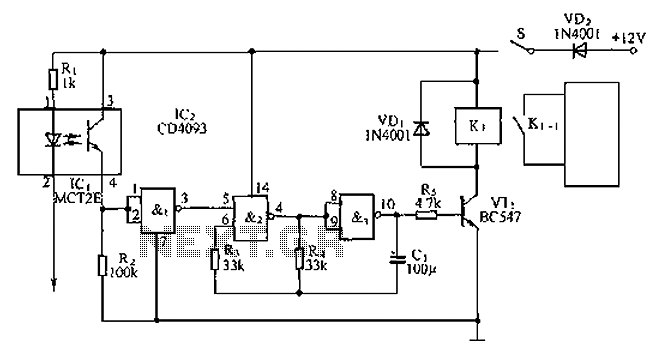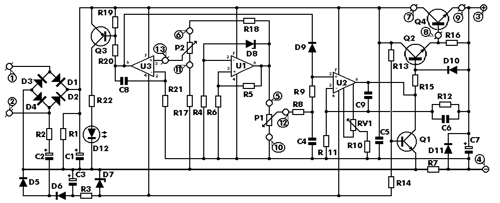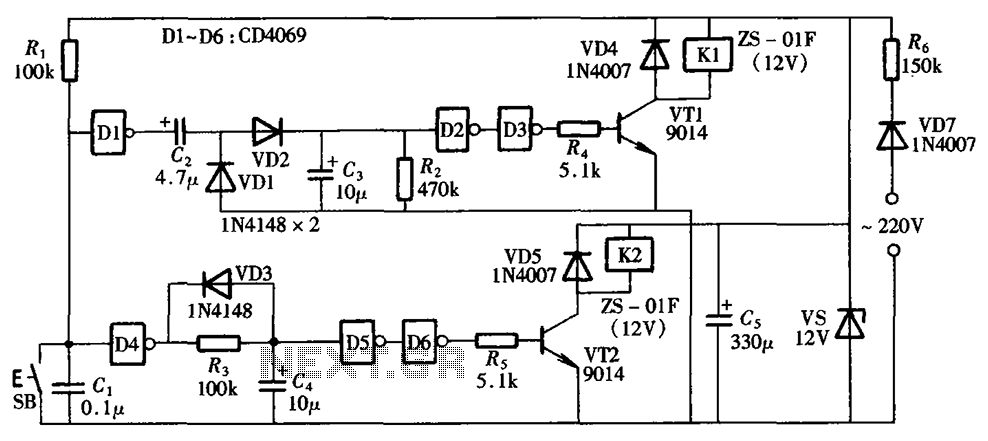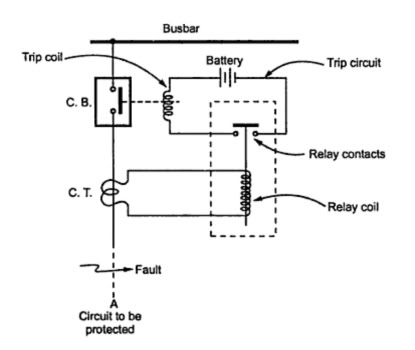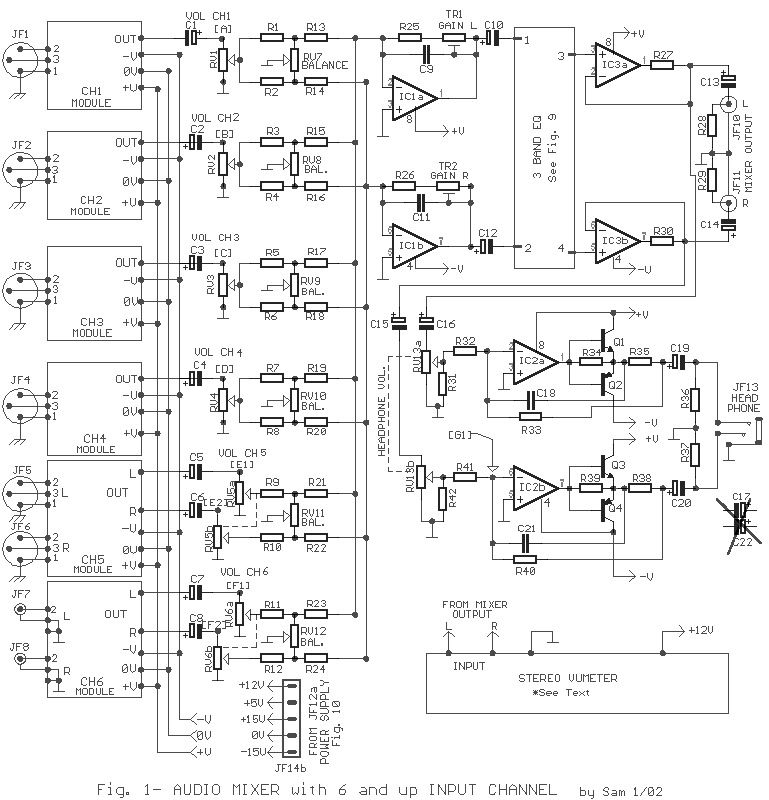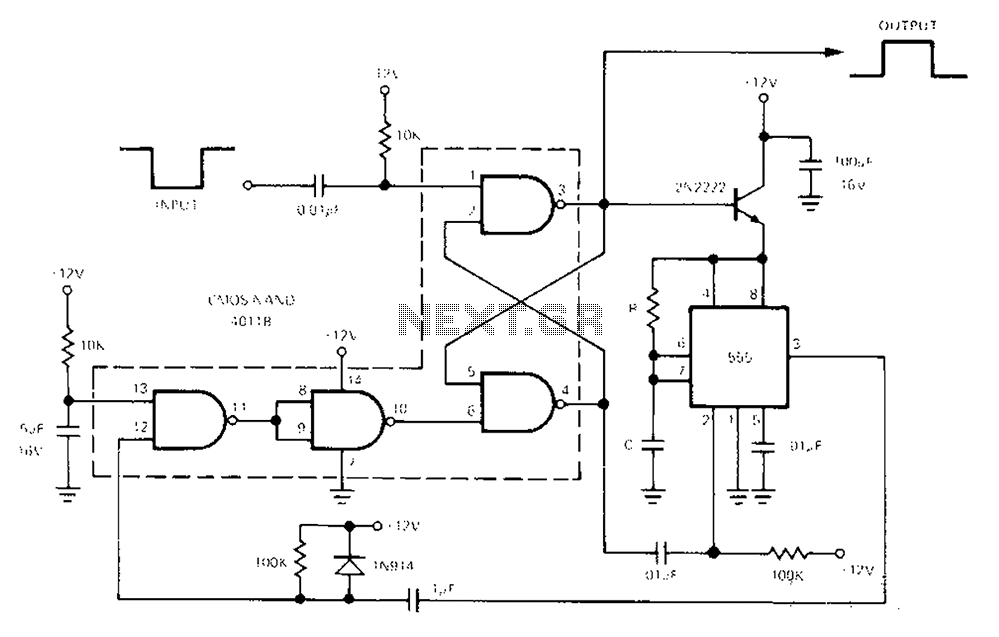
6W Morse-Code Transmitter 7Mhz Circuit
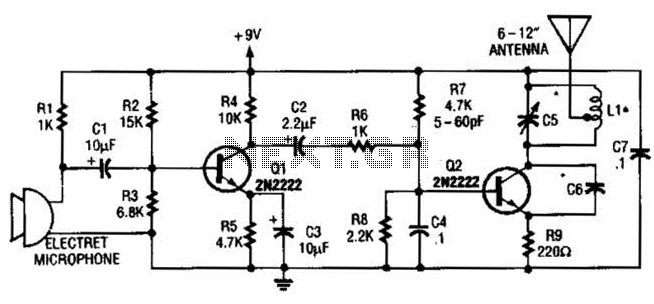
The vacuum tube remains relevant and functional in certain applications, such as in this continuous wave (CW) transmitter. The circuit is constructed in a traditional breadboard style on a wooden base. Old table radios serve as a valuable source of components for this circuit. V3 acts as a ballast resistor, which can be replaced with a 75- or 100-ohm, 5-watt resistor. L1 consists of 15 turns of hookup wire wound on a 2-inch form. Additionally, L2 is composed of 7 turns of the same wire and is wound over L1. Caution is advised as voltages up to 160 V are present on Y1 and V2.
The CW transmitter circuit utilizes vacuum tubes, which are known for their ability to amplify signals and operate at high voltages. The design employs a wooden base to support the breadboard layout, allowing for easy modifications and adjustments. The use of components salvaged from old table radios not only promotes recycling but also provides cost-effective solutions for building the circuit.
In the circuit, V3 serves as a ballast resistor, which is crucial for stabilizing the current and ensuring consistent operation of the vacuum tube. The choice of a 75- or 100-ohm, 5-watt resistor allows for flexibility in sourcing components while maintaining the desired electrical characteristics.
Inductors L1 and L2 play a significant role in the circuit's operation. L1, with its 15 turns of hookup wire, is designed to provide the necessary inductance for the circuit's frequency requirements. The 2-inch form used for winding L1 ensures that the inductor maintains a compact size while achieving the desired electrical performance. L2, with 7 turns wound over L1, acts as a coupling inductor, enhancing the circuit's efficiency by transferring energy between stages effectively.
Safety precautions are paramount, particularly due to the presence of high voltages (up to 160 V) on components Y1 and V2. Proper insulation and careful handling are essential to prevent electrical shock and ensure safe operation of the transmitter. Overall, this CW transmitter circuit exemplifies the enduring utility of vacuum tubes in modern electronics, showcasing their application in RF transmission while emphasizing the importance of safety and component sourcing. The vacuum tube is still alive and useful in some applications, as in this CW transmitter, The circuit was built in old-fashioned breadboard style on a wooden base. Old table radios are a good source of parts for this circuit. V3 is used as a ballast resistora 75- or 100- 5-W resistor could be substituted. LI is 15 turns of hookup wire on a form 2 long. L2 is 7 turns of the same wire. L2 is wound over LI. Be careful as up to 160 V is present onYl and V2.
The CW transmitter circuit utilizes vacuum tubes, which are known for their ability to amplify signals and operate at high voltages. The design employs a wooden base to support the breadboard layout, allowing for easy modifications and adjustments. The use of components salvaged from old table radios not only promotes recycling but also provides cost-effective solutions for building the circuit.
In the circuit, V3 serves as a ballast resistor, which is crucial for stabilizing the current and ensuring consistent operation of the vacuum tube. The choice of a 75- or 100-ohm, 5-watt resistor allows for flexibility in sourcing components while maintaining the desired electrical characteristics.
Inductors L1 and L2 play a significant role in the circuit's operation. L1, with its 15 turns of hookup wire, is designed to provide the necessary inductance for the circuit's frequency requirements. The 2-inch form used for winding L1 ensures that the inductor maintains a compact size while achieving the desired electrical performance. L2, with 7 turns wound over L1, acts as a coupling inductor, enhancing the circuit's efficiency by transferring energy between stages effectively.
Safety precautions are paramount, particularly due to the presence of high voltages (up to 160 V) on components Y1 and V2. Proper insulation and careful handling are essential to prevent electrical shock and ensure safe operation of the transmitter. Overall, this CW transmitter circuit exemplifies the enduring utility of vacuum tubes in modern electronics, showcasing their application in RF transmission while emphasizing the importance of safety and component sourcing. The vacuum tube is still alive and useful in some applications, as in this CW transmitter, The circuit was built in old-fashioned breadboard style on a wooden base. Old table radios are a good source of parts for this circuit. V3 is used as a ballast resistora 75- or 100- 5-W resistor could be substituted. LI is 15 turns of hookup wire on a form 2 long. L2 is 7 turns of the same wire. L2 is wound over LI. Be careful as up to 160 V is present onYl and V2.
